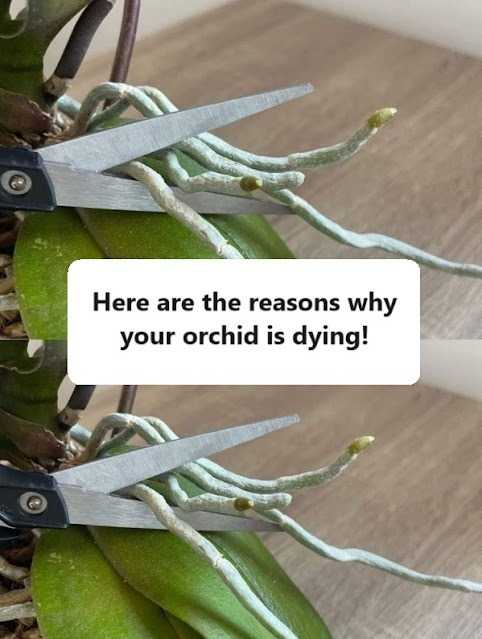ADVERTISEMENT
Solution:
- Make sure your orchid is in a well-ventilated room where air can flow freely around the plant.
- Consider placing your orchid near a fan or using a small oscillating fan to gently circulate the air.
- Avoid placing the orchid in a crowded space where it might be suffocated by other plants.
5. Fertilizer Issues
While orchids do need nutrients, using the wrong kind of fertilizer or over-fertilizing can damage your plant. Orchids are sensitive to chemicals and can suffer if they are fed too often or with fertilizers that are too concentrated.
Signs of fertilizer issues: Brown or yellow leaf tips, weak growth, or burned roots.
Solution:
- Use a balanced, water-soluble orchid fertilizer that’s specifically formulated for orchids.
- Fertilize your orchid every 2 weeks during the growing season (spring and summer) and once a month during the dormant period (fall and winter).
- Always dilute the fertilizer to half the recommended strength to avoid overfeeding, which can harm the plant.
6. Root Rot and Poor Potting Medium
If your orchid is in a pot that retains too much moisture, or the potting medium is old and degraded, the plant may experience root rot. Orchids require well-draining medium, such as bark-based mixes designed for orchids. The wrong potting material can retain too much water, causing roots to suffocate and rot.
Signs of root rot: Yellow or wilting leaves, mushy roots, and a musty smell from the soil.
Solution:
- Repot your orchid in a new pot with a well-draining orchid mix, which typically contains bark, perlite, and sometimes sphagnum moss.
- Gently remove any rotting or mushy roots during repotting, and be sure to disinfect your tools before using them on other plants.
- Repotting should be done every 1-2 years to refresh the potting mix and ensure that the plant has enough space to grow.
7. Pests and Diseases
Orchids are susceptible to various pests, including mealybugs, aphids, scale insects, and spider mites, as well as fungal and bacterial infections. Pests can cause significant damage to both the plant and its roots, leading to a decline in health.
Signs of pests or diseases: Sticky residue on leaves, small webs, discolored or damaged leaves, or a visible infestation of insects.
Solution:
- Inspect your orchid regularly for pests, especially underneath the leaves and around the roots.
- If you spot pests, treat the plant with a mild insecticidal soap or a mixture of water and rubbing alcohol.
- Remove infected or damaged areas of the plant to prevent the spread of disease, and consider quarantining the plant away from other plants.
8. Improper Repotting or Overcrowding
Orchids need space to grow and breathe, and repotting them too frequently or keeping them in overcrowded pots can stunt their growth. Orchids typically need to be repotted every 1-2 years to ensure they have enough room for root expansion.
Signs of overcrowding: Roots growing out of the pot, weak growth, and an orchid that has outgrown its pot.
Solution:
- Repot your orchid only when necessary—typically when the roots have outgrown the current pot or when the potting medium has broken down.
- Choose a pot that is only slightly larger than the current one, as orchids prefer to be a little “root-bound.”
Conclusion
Taking care of an orchid requires some attention and understanding of its unique needs. By ensuring the right amount of water, light, temperature, humidity, and proper care, you can help your orchid thrive. If your orchid is struggling, pinpointing the cause of its decline—whether it’s overwatering, temperature stress, pests, or other issues—will help you address the problem and nurse your plant back to health.
Remember, orchids are resilient plants, and with the right care, they can bounce back and reward you with their stunning blooms for years to come. So, don’t give up on your orchid just yet—give it a little TLC, and you may soon be enjoying its beauty once again!
ADVERTISEMENT
